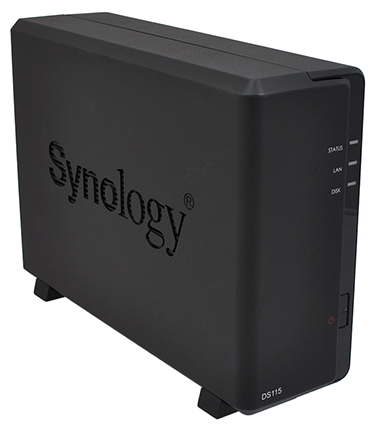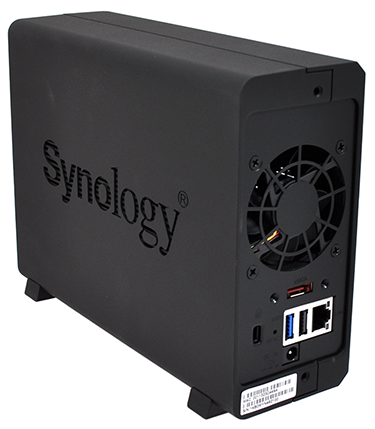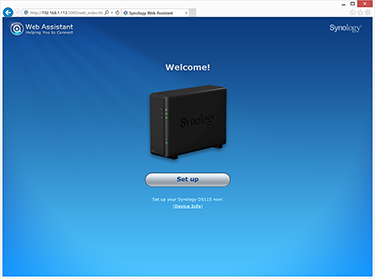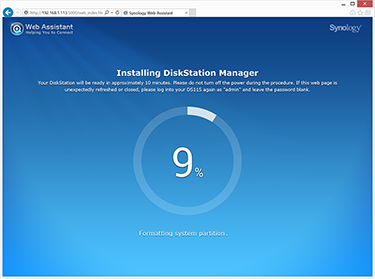Introduction
The popularity of cloud-based storage solutions has risen dramatically in recent years, but if you're serious about your data, there's nothing better than a fully-fledged network-attached-storage (NAS). Centralising all your data in one convenient location, NAS solutions can play a crucial role in our multi-device lifestyles, and today's units are better equipped and more affordable than ever before.
And while it's customary to wait until the end of reviews before dishing out any accolades, we'll start today's analysis by cutting to the chase: Synology's DS115 is one of the best single-bay NAS solutions available and comes highly recommended. Read on to find out why.
Launched at the turn of the year and priced at around £125, the DS115 is the latest addition to Synology's single-bay lineup and augments the DS115j (£85) as a higher-performance unit for home or small-office users wanting to keep things simple but fast.
This is an area of the market that's becoming increasingly competitive, and though Synology is a well-known brand in this particular field, it faces renewed competition now that WD has arrived on the scene with the popular My Cloud.
Hoping to set itself apart from the low-cost competition, the DS115 comes equipped with a dual-core and floating-point-enabled Marvell Armada processor, alongside 512MB of DDR3 memory and a single internal SATA 6Gbps interface.
Measuring 166mm x 71mm x 224mm in size, Synology's all-black chassis isn't as compact or easy-on-the-eye as WD's My Cloud, yet it's sleek enough and though built primarily of plastic, feels well-put together. Three status LEDs and a power button line the front panel, while the connectivity options around back include eSATA, USB 3.0, USB 2.0, Gigabit Ethernet and a connector for the small, 36W power adapter.
Cooling for the entire unit is taken care of by a quiet-running fan that can be configured to turn off when temperatures are low, and as with most Synology units, there's no storage included as standard. Users need to install a drive of their choice, and this is easily done by sliding off the side cover to reveal the internal bay. Note that an optional disk holder will be required to mount a 2.5in drive (this, sadly, isn't provided in the box), and for the sake of compatibility, it's always worth checking Synology's list of approved drives before making your choice. There's a wide selection to choose from, including some of the latest 6TB models.
From a hardware point of view, the DS115 is a simple-looking NAS and the basic components clearly don't amount to £125. The bulk of that cost, however, can be attributed to the excellent DiskStation Manager (DSM) operating system.
Now at version 5.1, the DSM software continues to be the main attraction to a Synology NAS. Presentation and implementation are, we feel, a cut above most of the competition, and it's this level of software refinement that makes the DS115 so satisfying to use.
Designed to cater for novices and power users alike, the installation process is as simple as pointing a web browser on any networked PC to find.synology.com and following the on-screen wizard. After updating to the latest firmware and creating an administrator account, the NAS is up and running in less than 10 minutes. One of the advantages of a single-bay unit is that you don't need to wait for time-consuming RAID arrays to be built.
Once logged in, every available function is easily accessible and presented in plain English via a slick web-based admin panel. From here, users can explore all of the DS115's party tricks, and there are plenty of them. In addition to offering centralised storage for Windows, Mac or Linux platforms, a number of free add-on apps give the NAS a whole new outlook.
There's Cloud Station for synchronising files across multiple devices, Surveillance Station for all your IP camera needs, Video Station, Photo Station and Audio Station for building your own multimedia libraries, as well as a built-in DLNA media server and a comprehensive suite of mobile apps - including dedicated video apps for Smart TVs, Apple TV, Chromecast and Roku. Today's NAS units are about much more than just pooling data, and the DS115 is a good example of that.
The best way to get a feel for the interface and the features is to try out Synology's Live Demo, but while there's plenty to like, it's worth bearing in mind the DS115's one obvious omission: the lack of built-in redundancy. As a single-drive solution, the DS115 misses out on the security of a RAID-enabled box, and if multiple drive bays matter more to you than performance, Synology's own dual-bay DS214se is available for roughly the same price, albeit with reduced CPU and memory specifications.
Is RAID something we're willing to forego on a NAS solution? In the past, maybe not, but given the falling cost of external USB 3.0 drives and the availability of Cloud-based backups (DS115 can backup direct to Microsoft Azure), perhaps built-in redundancy is no longer a minimum requirement. A dual-bay solution still offers greater peace of mind, but if you're certain a one-drive unit will suffice, let's take a look at DS115 performance.















